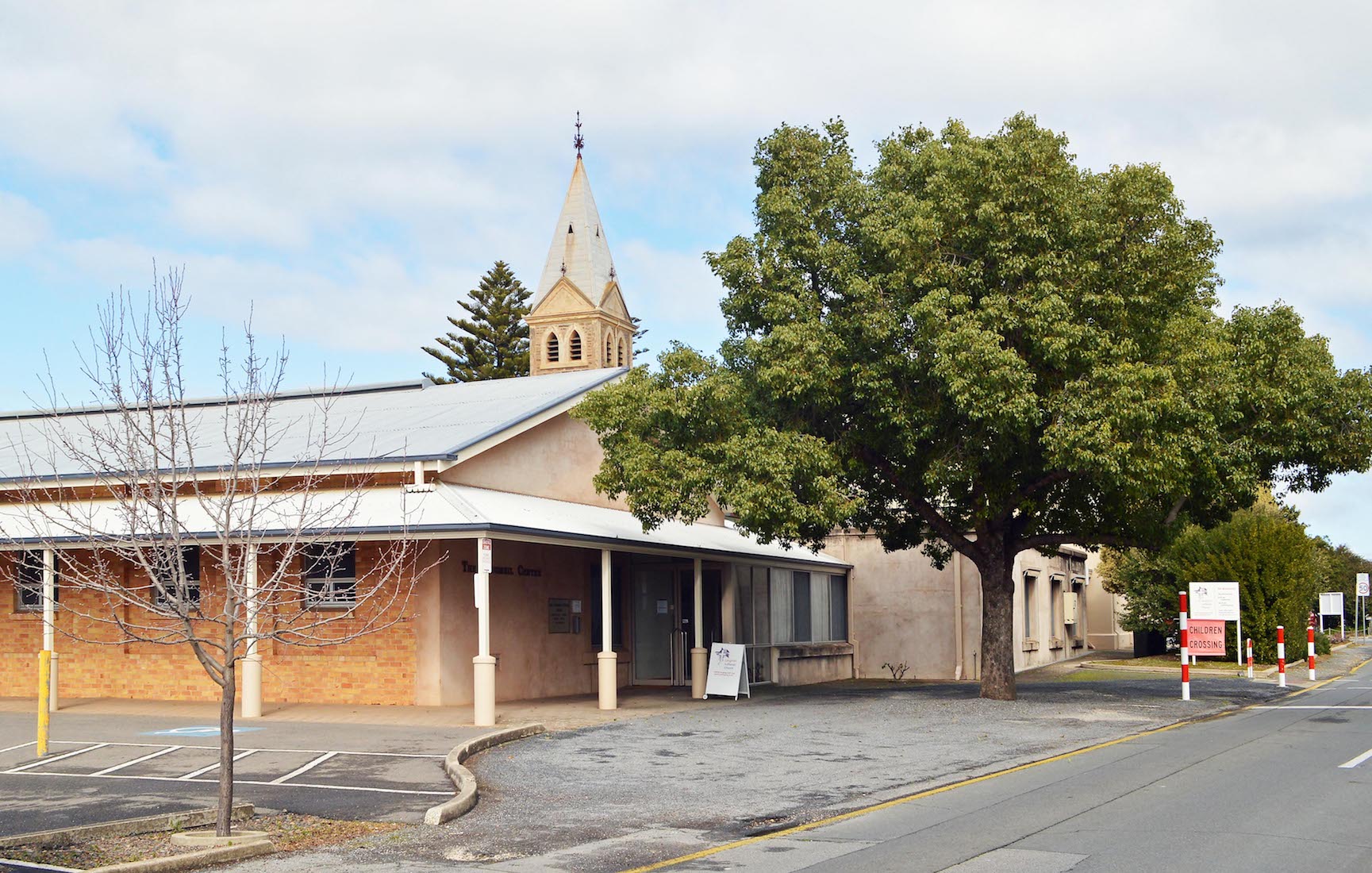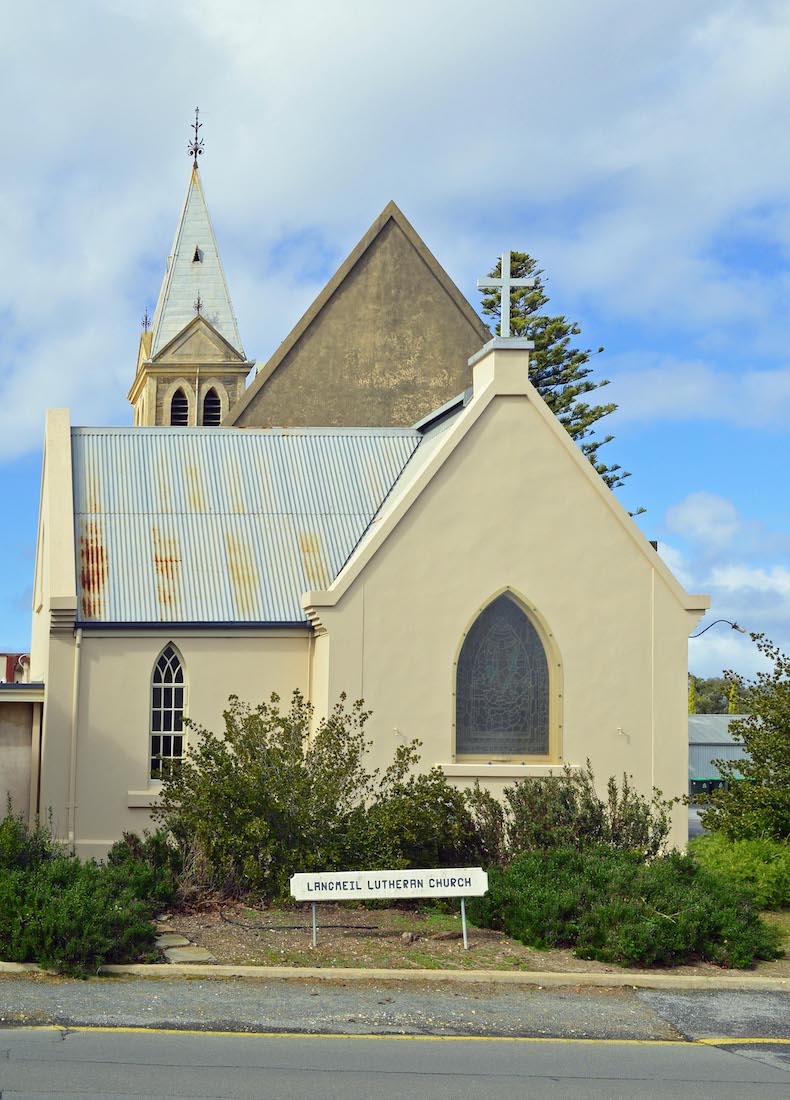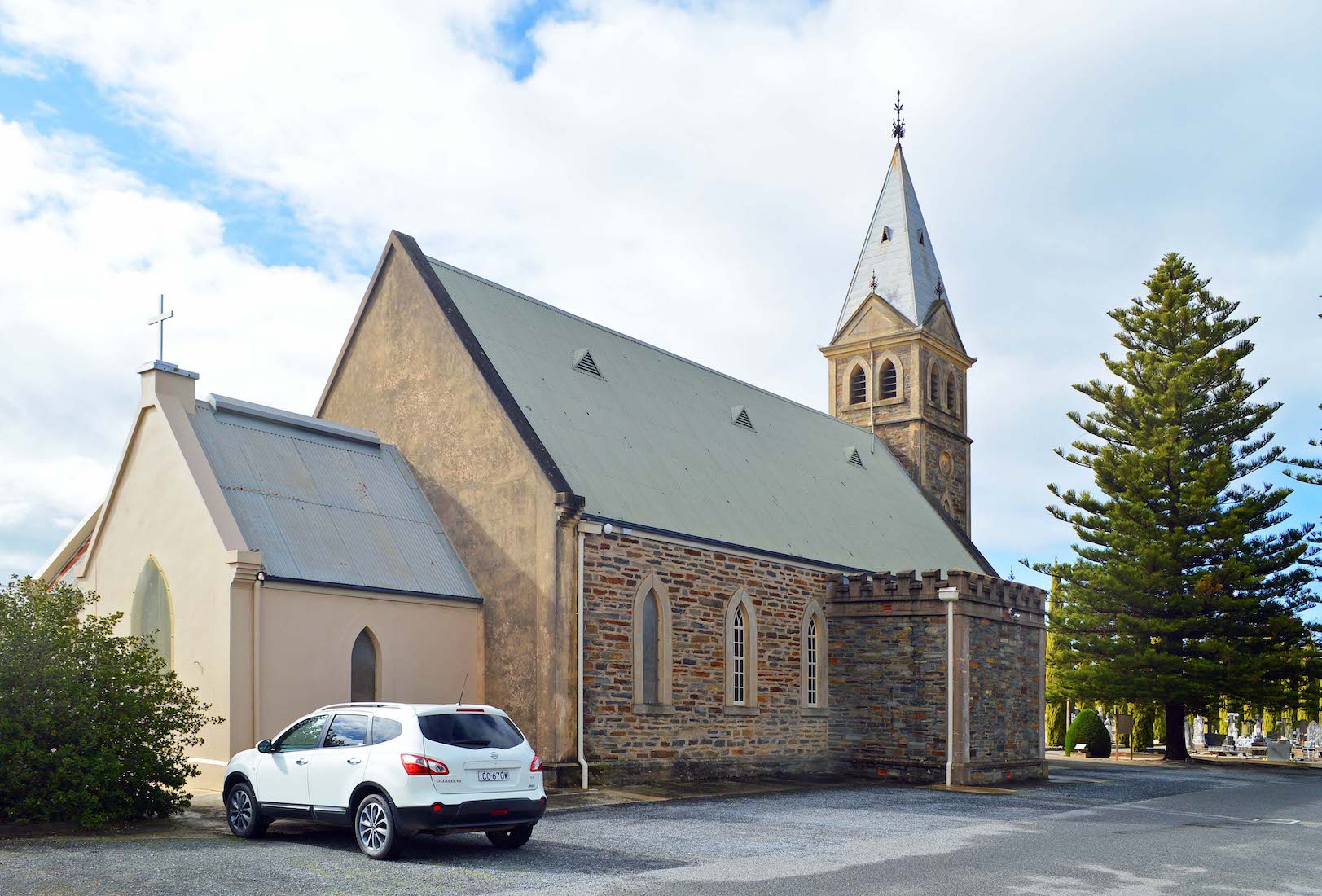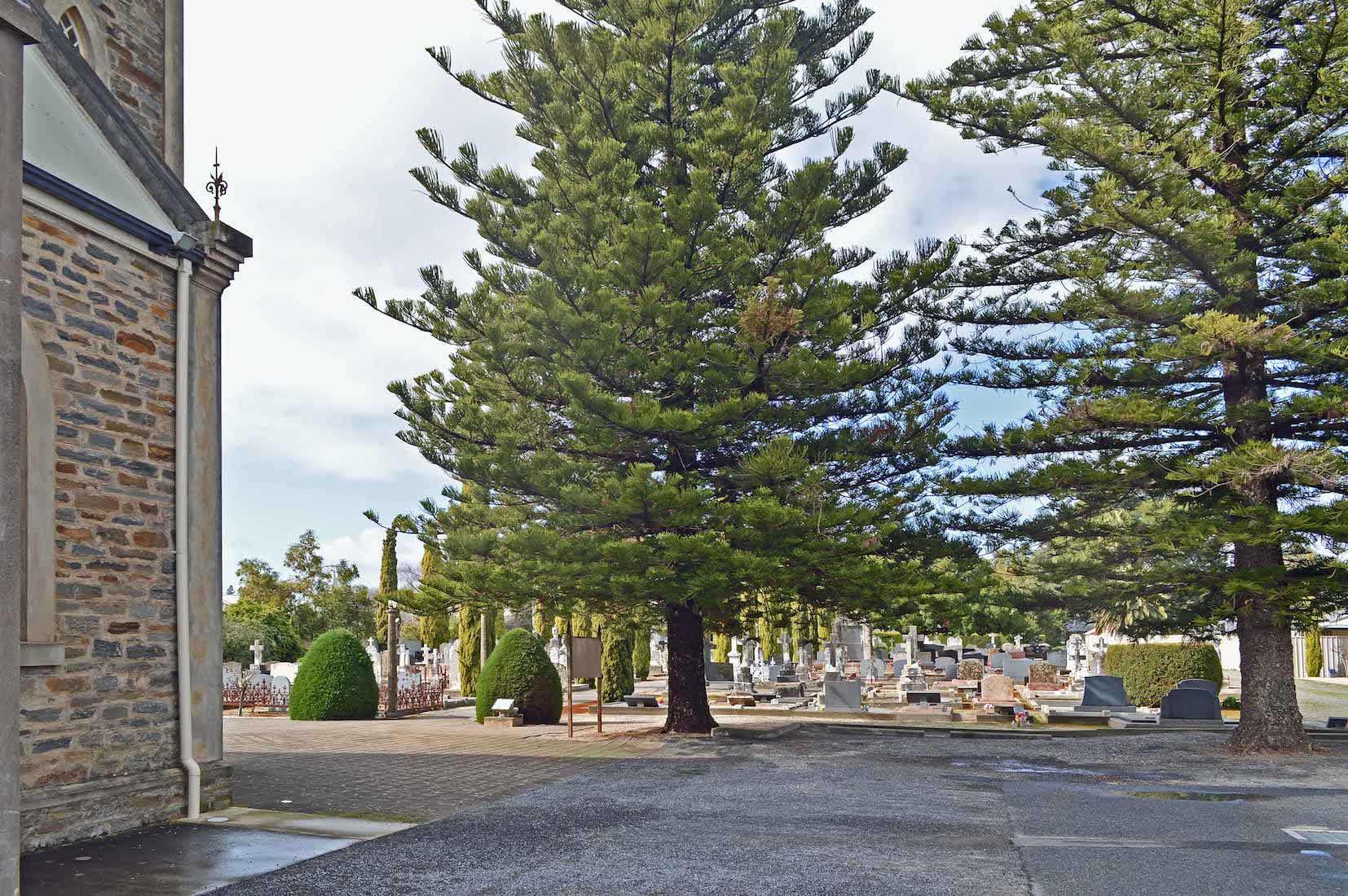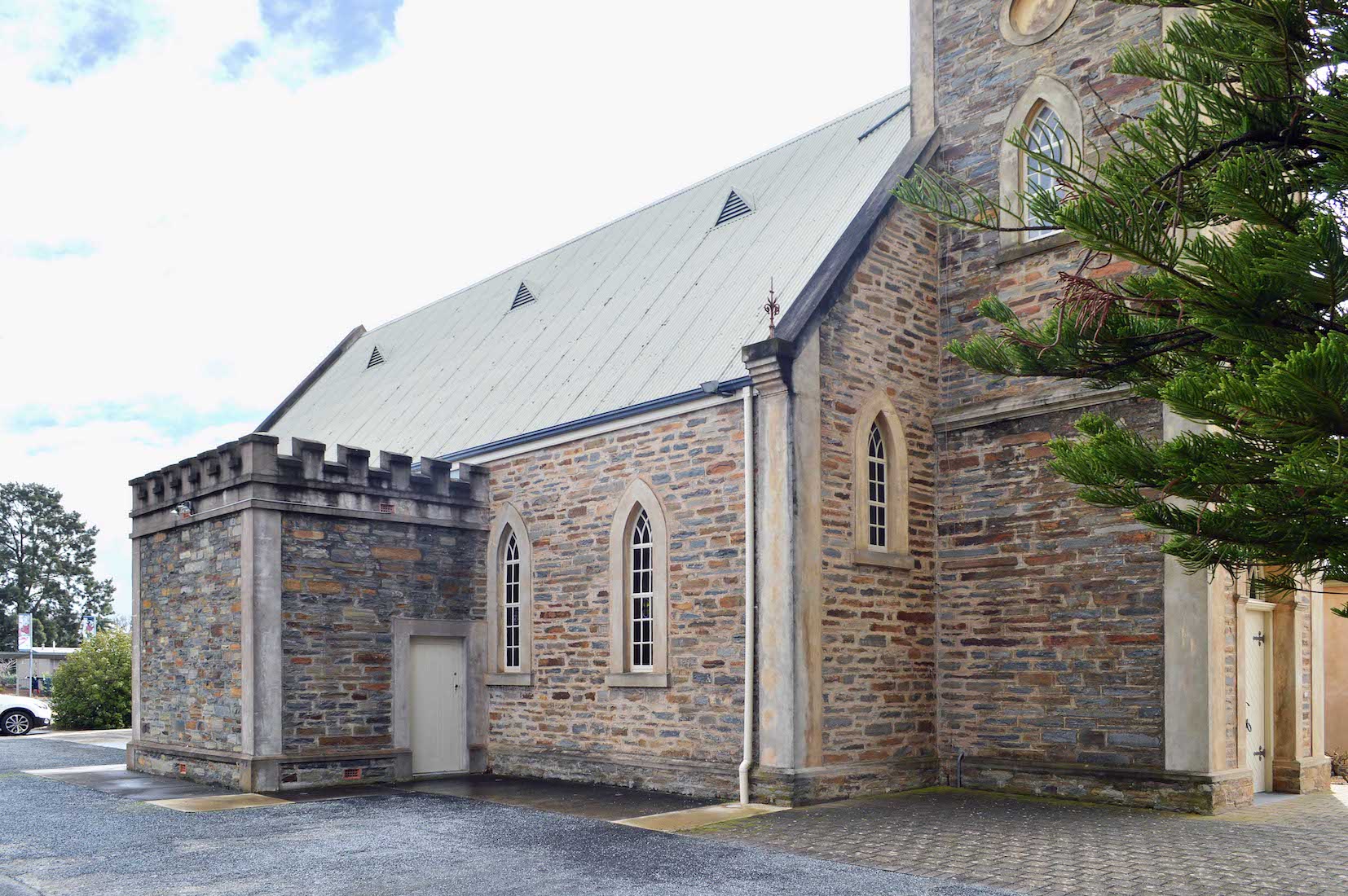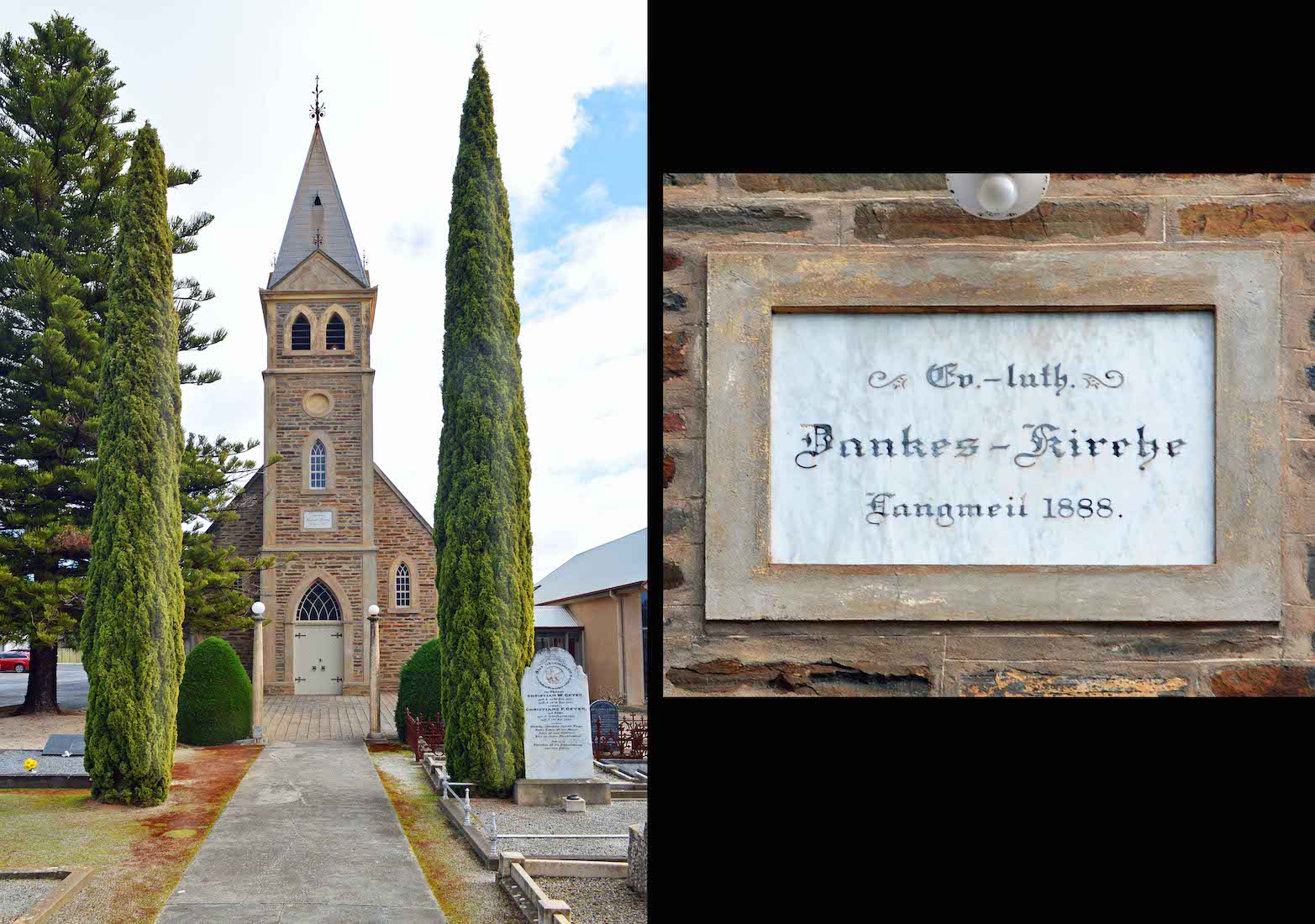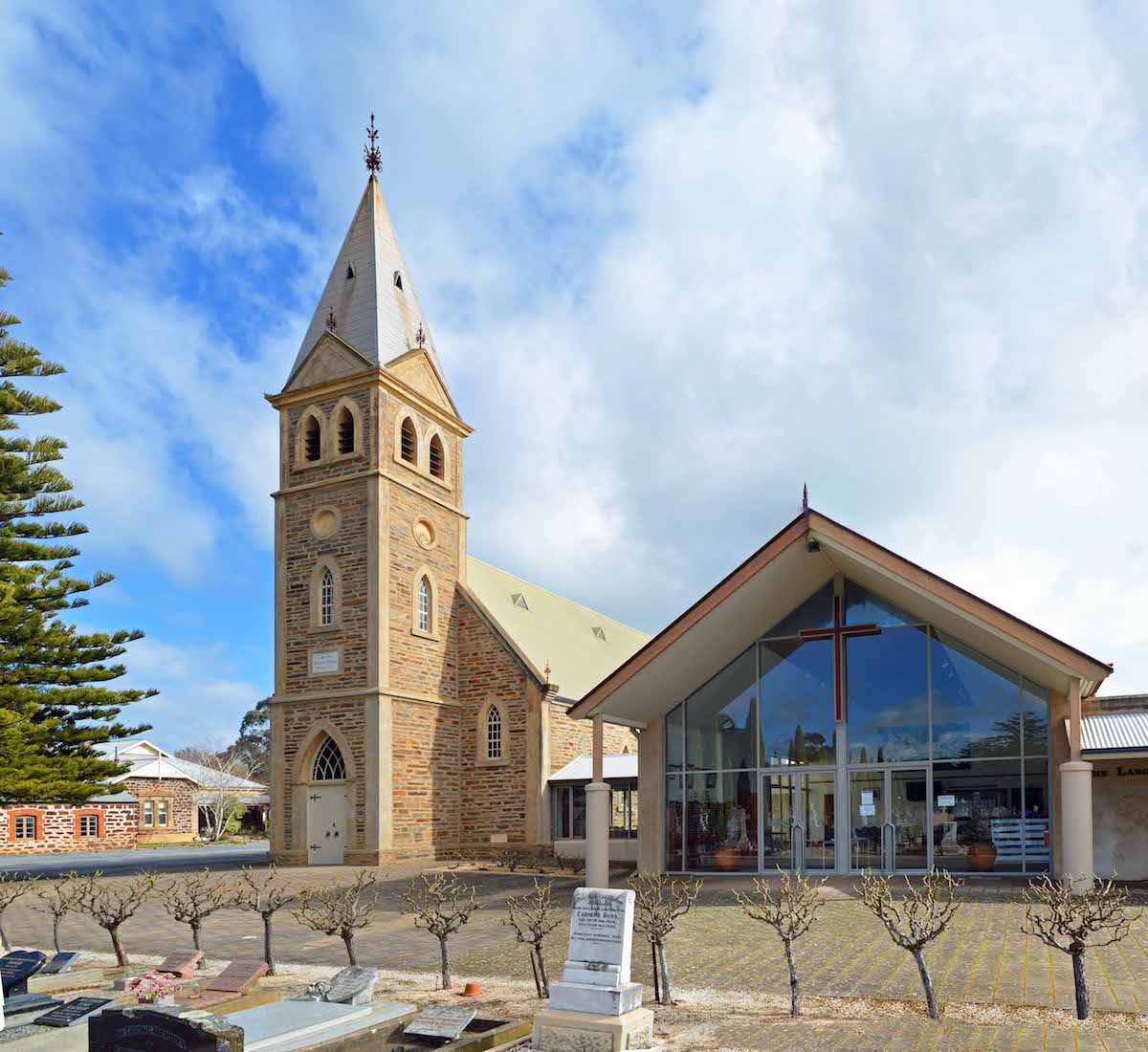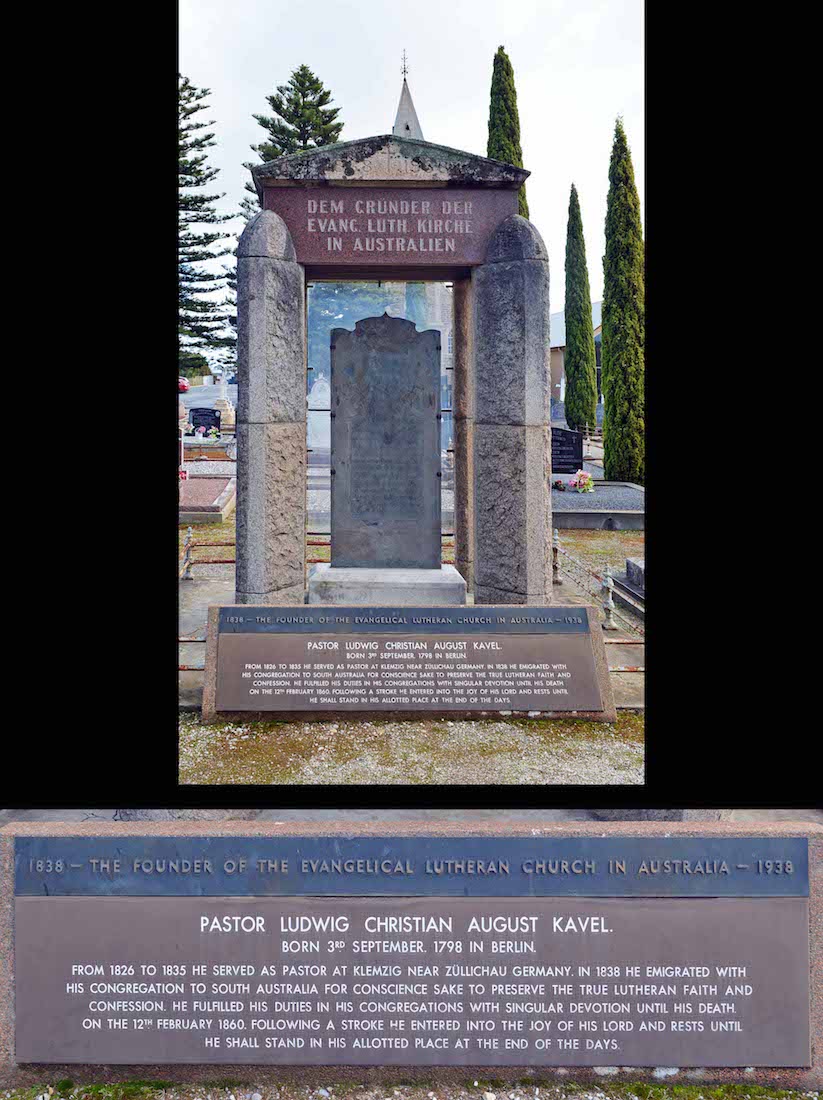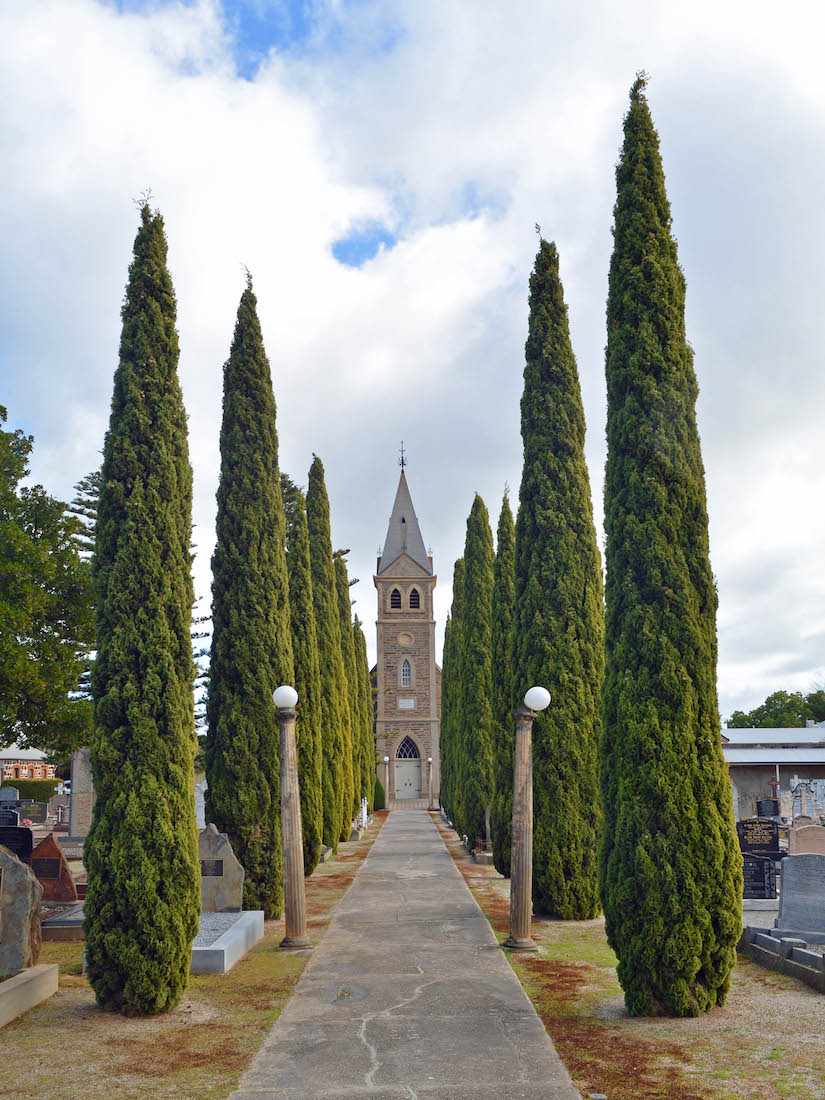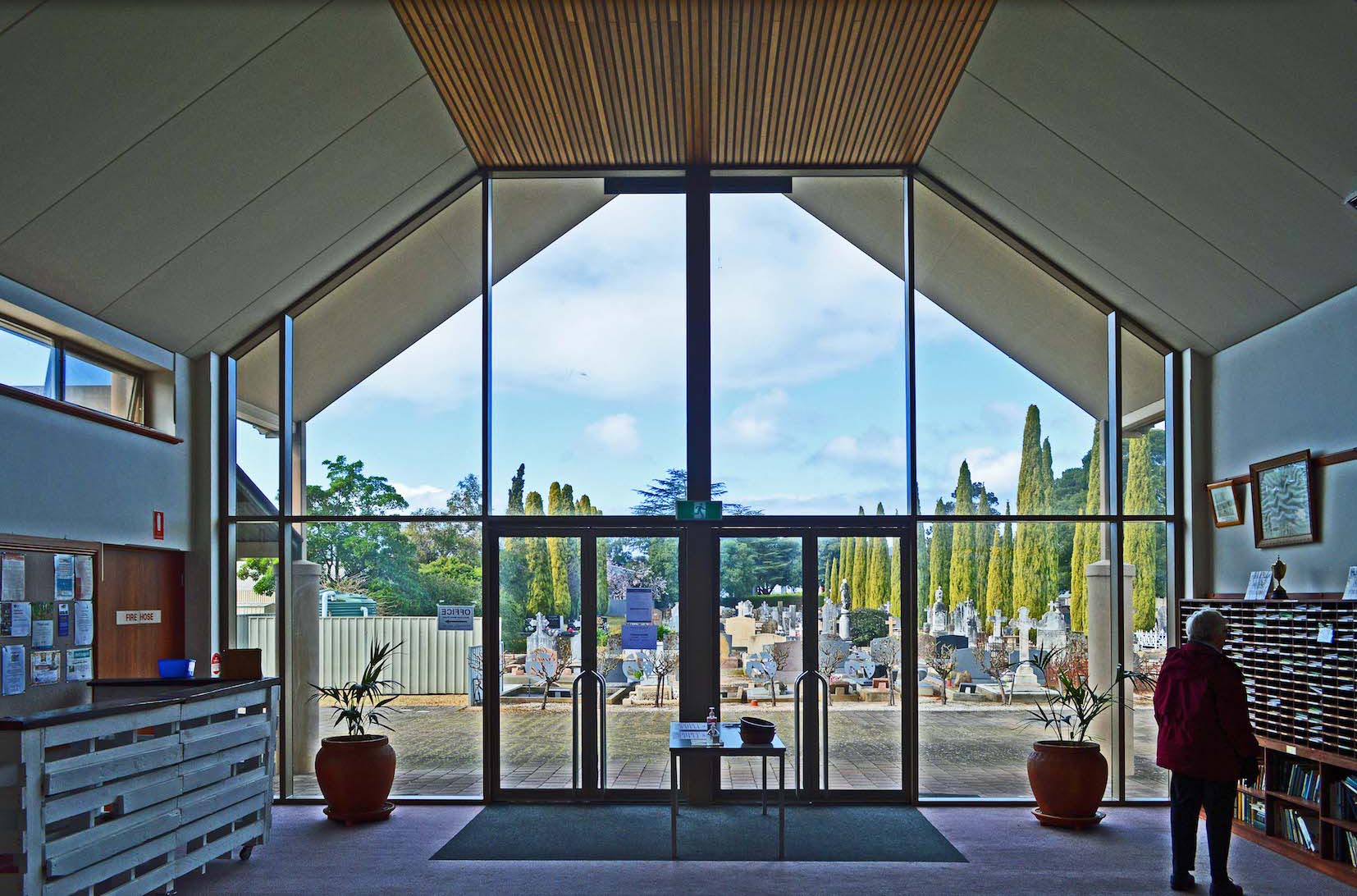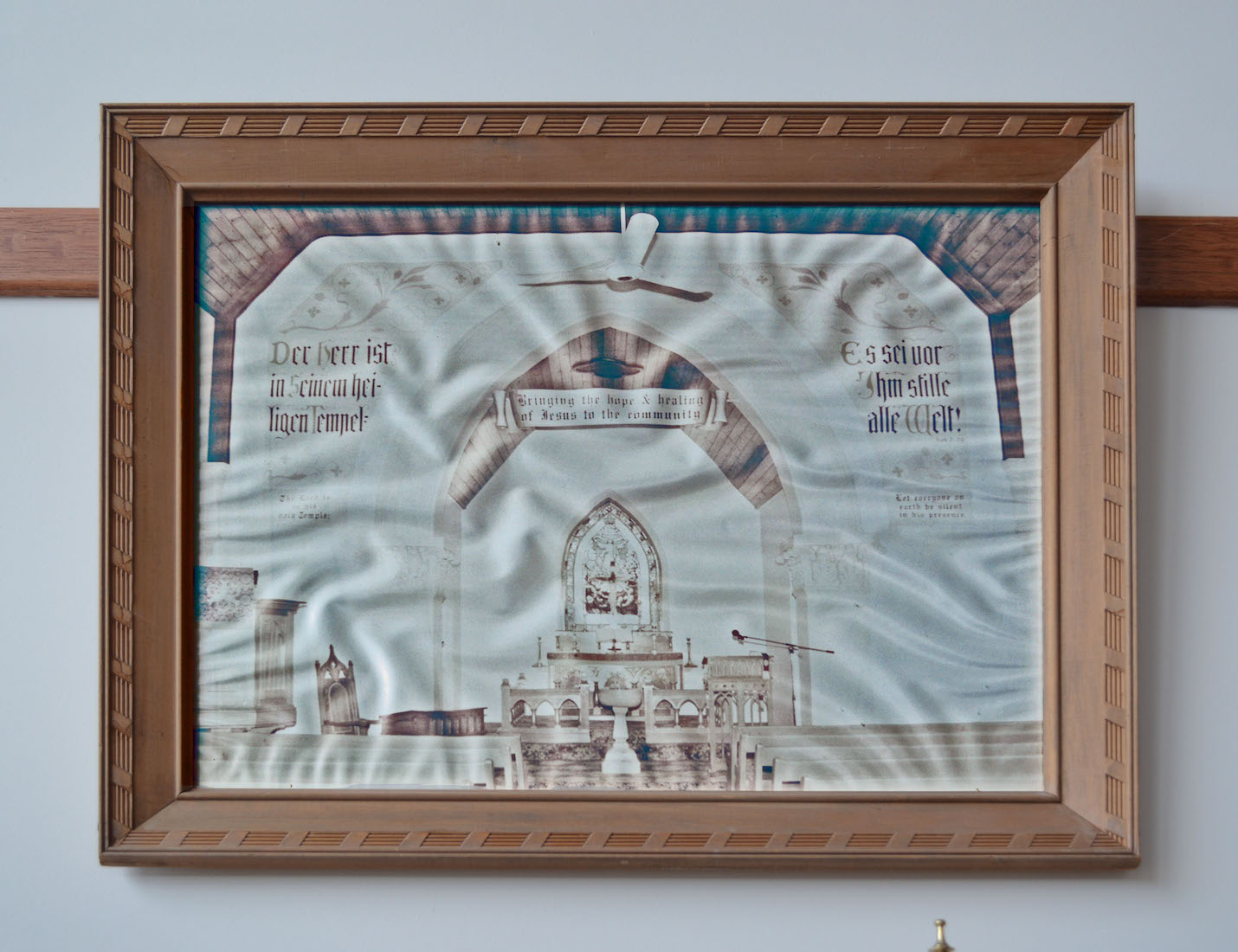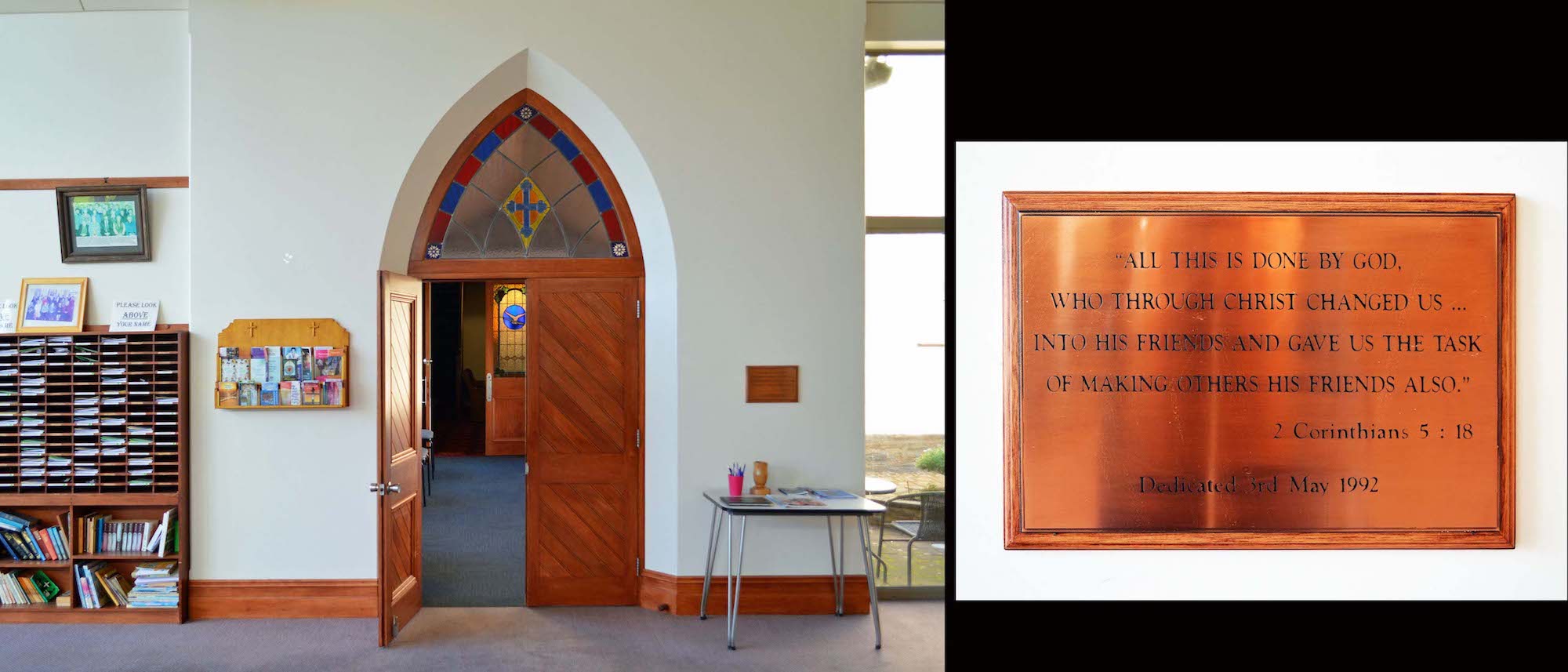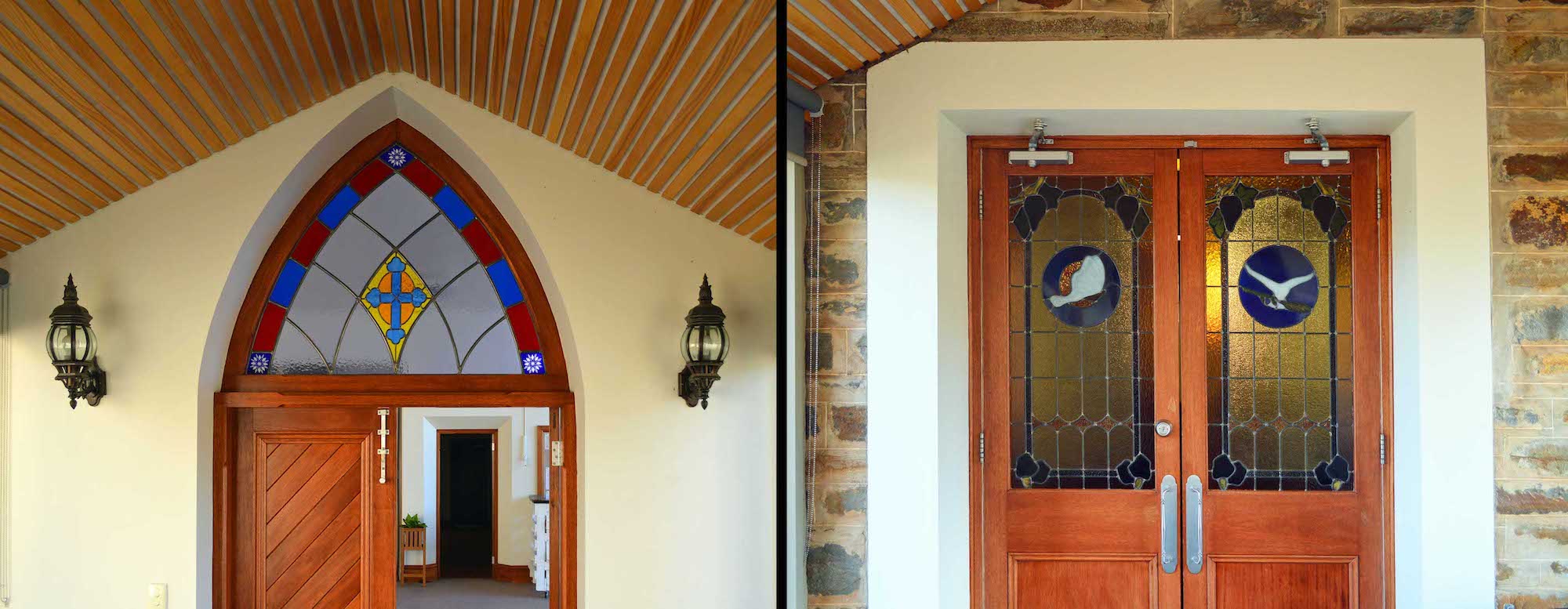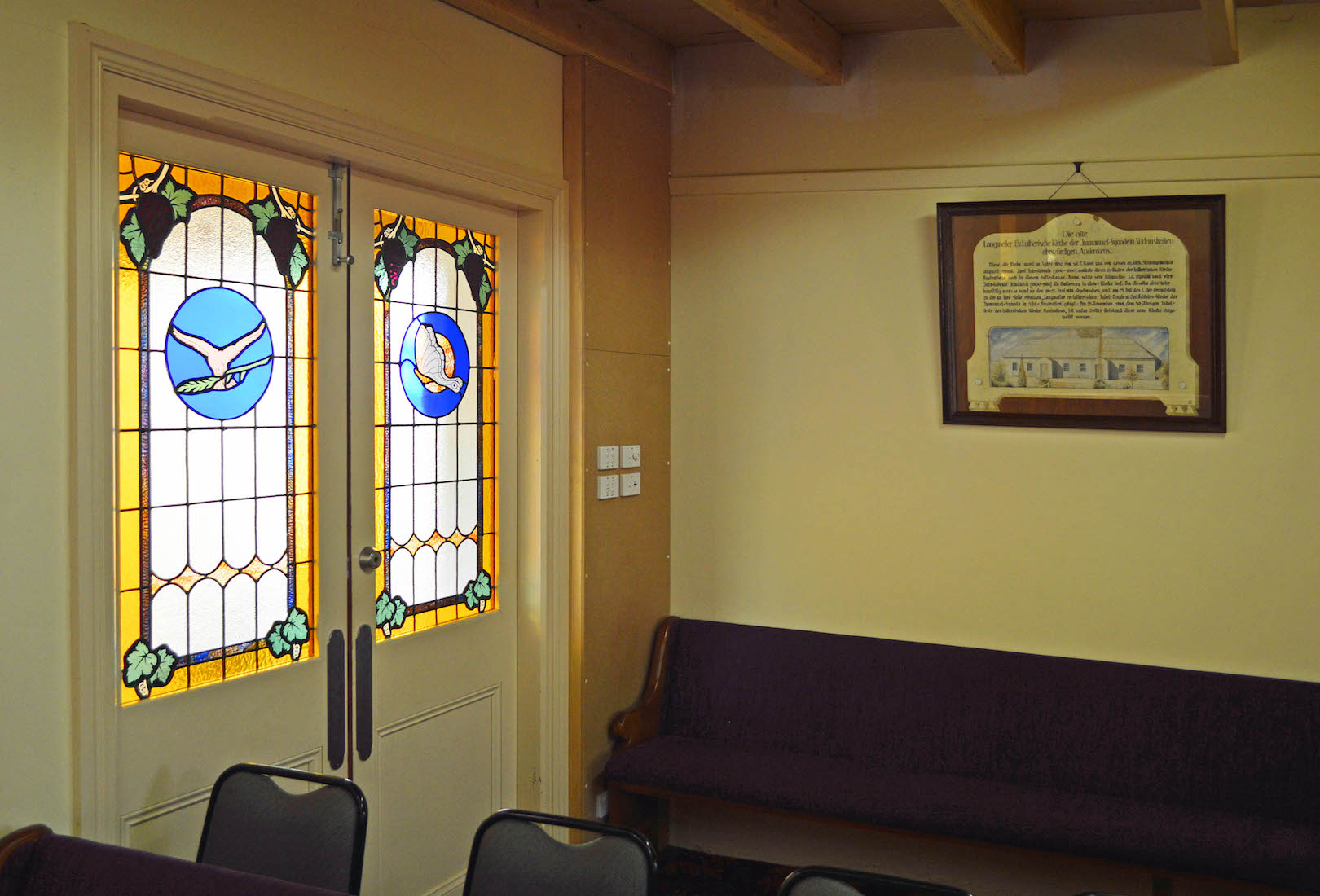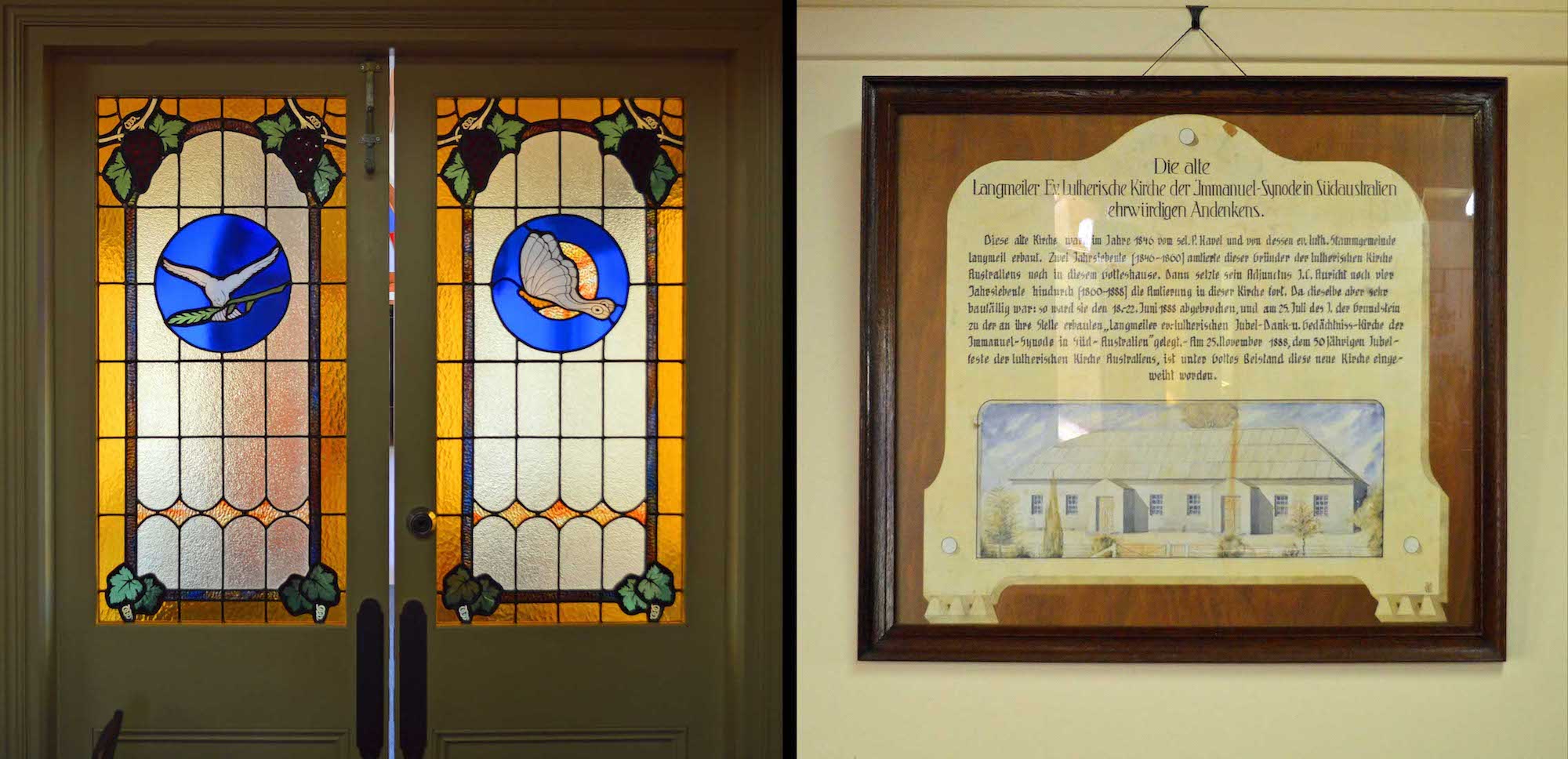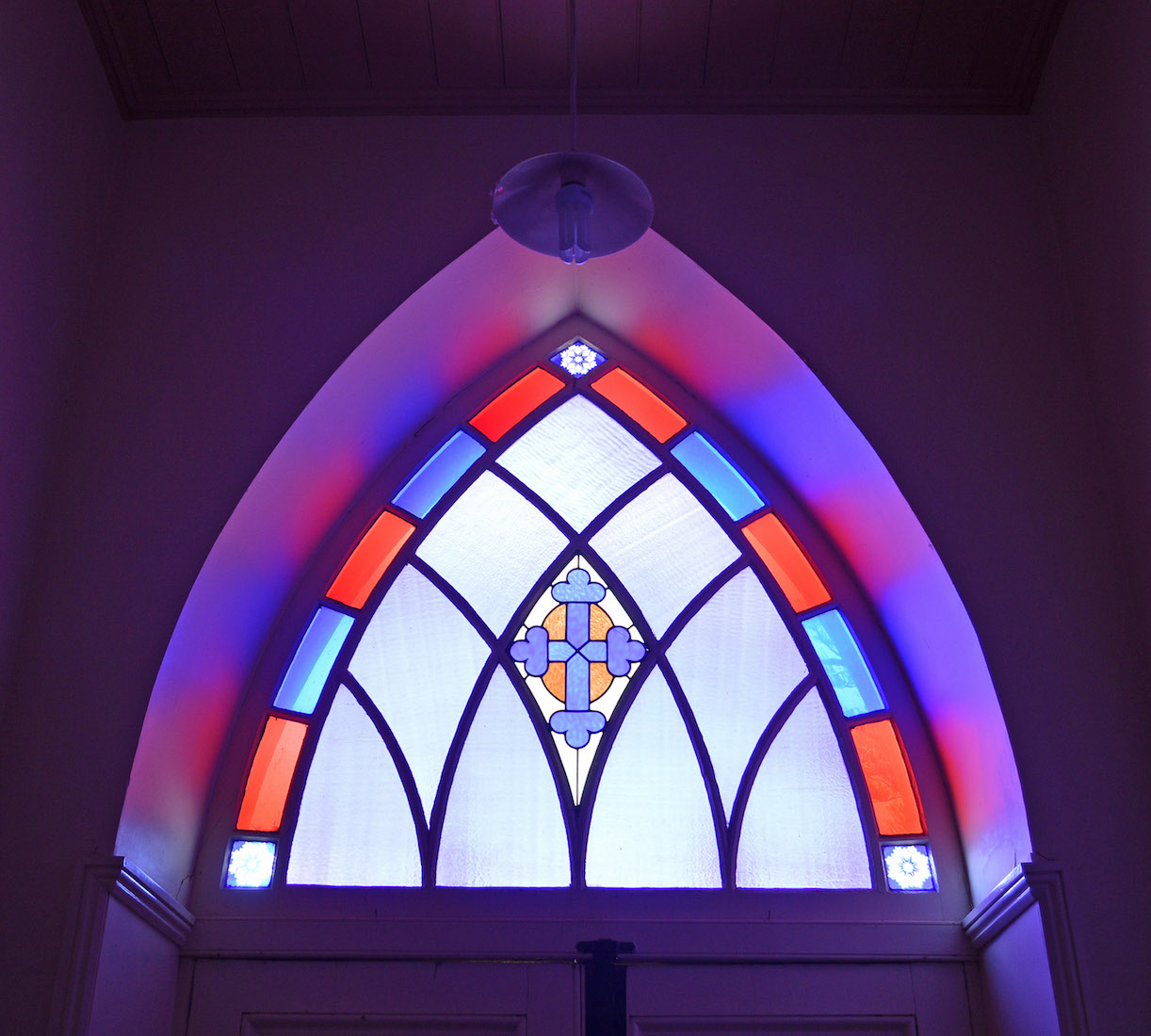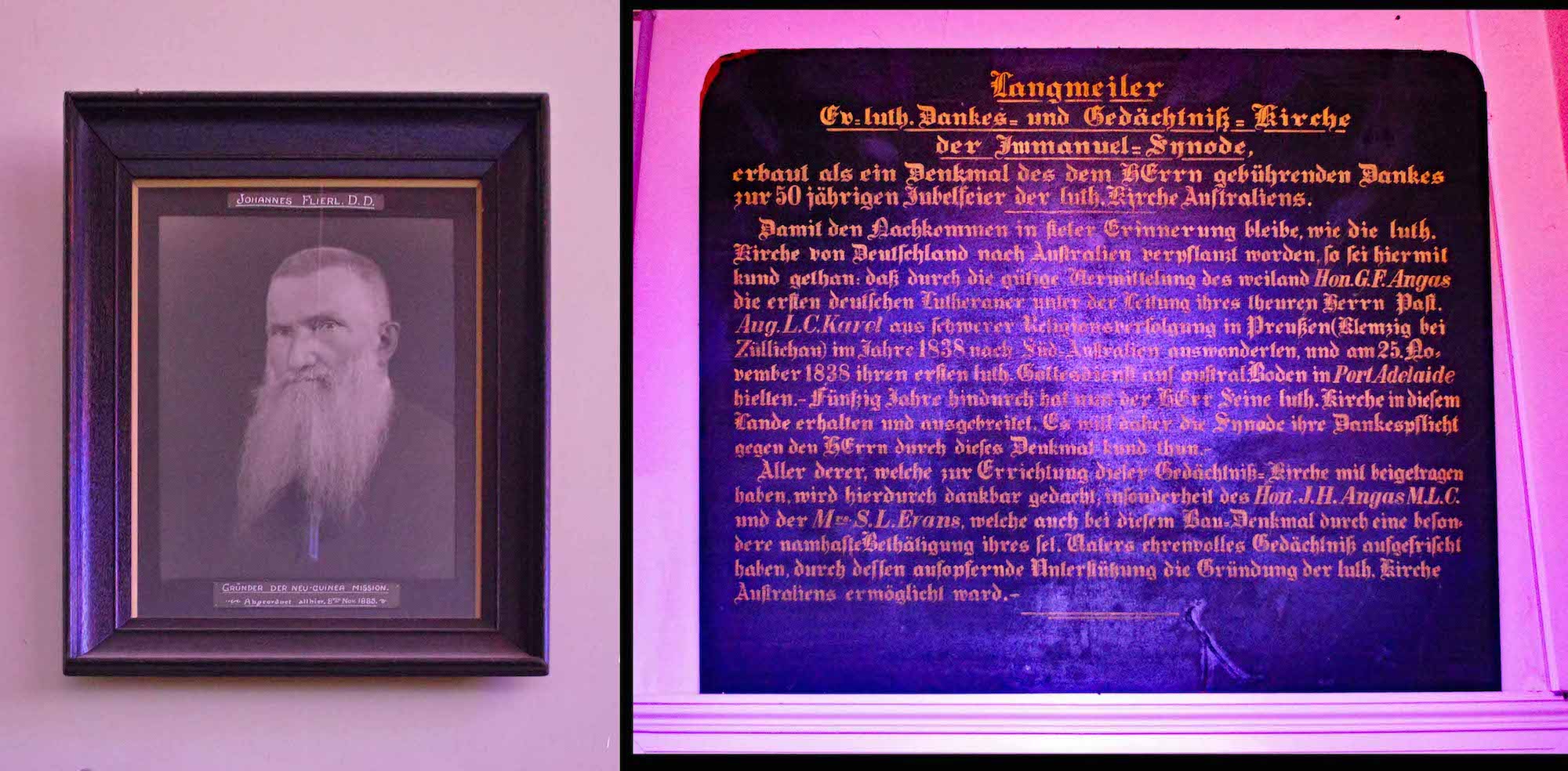2. SIGN AND VIEW OF THE TOWER
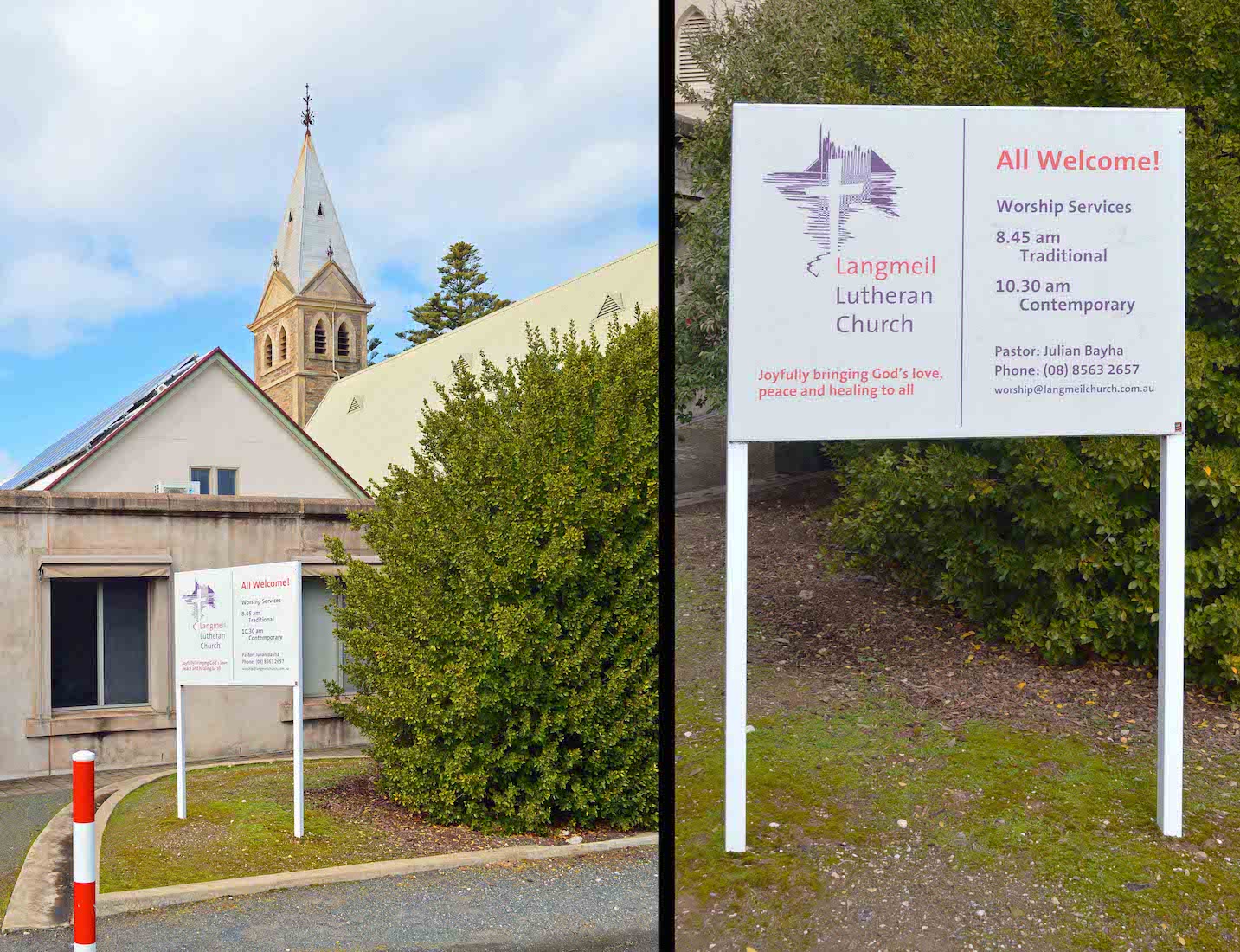
The sign gives the service times and the Pastor’s contact details. Also the Church motto: ‘Joyfully bringing God’s love, peace and healing to all’. The tower was built in 1888, along with the rest of the Church. In preparation for the tower, a bronze bell was cast at the Barwell foundry, Birmingham, England in 1887. Its tone is C Sharp and it measures 30 x 24 in. (762 x 610 mm) with a weight of 267 kg.
3. EASTERN VIEW
From this position we can view the East end of the sanctuary and nave, and the large East window. The pastor’s vestry leads off to the left of the sanctuary, and is then linked to the main complex. ‘Langmeil’ translates to ‘Long Mile’. It was the name of an early Barossa Village which over time came to be known as Tanunda. The Church is 1.5 kilometres from the town of Tanunda – a ‘long mile’.
4. THE OLD CHURCH
The most noticeable feature of this North wall of the Church is the large castellated stone block extending from the middle of the nave. The Church organ was dedicated to the memory of Theodor J.S. Geyer, Langmeil organist from 1895 to 1946, at the morning service of 9 April 1950 – a surprisingly late date. To house it, a special organ chamber of stone work matching that of the church, had been erected on the North side of the church.
5. CEMETERY
A large cemetery lies to the West of Langmeil Church. As one might expect, many early German settlers were burierd here, with some of the dates in the 1800s.
6. NORTHWEST VIEW
Continuing our walk around this Church we come to the Northwest corner. I always enjoy the fine stonework of these old churches, the stones taken from local quarries.
7. WEST VIEW OF THE TOWER
A long straight path leads through the cemetery to the West tower. The plaque on the tower reads (in German): ‘Ev. – Luth. Thanksgiving Church Langmeil 1888.’
8. CHURCH AND HALL
This is a view of the old and the new linked together, taken from the cemetery. There are some fancy finials on the tower.
9. PASTOR KAVEL’S GRAVE
This is probably the best-known of the graves in the Langmeil Cemetery. Ludwig Christian August Kavel was a Pastor, born 3 September 1798 in Berlin. From 1826 to 1835 he served as Pastor at Klemzig near Zullichau, Germany. In 1838 he emigrated with his congregation to South Australia for conscience sake to preserve the true Lutheran faith and confession. He fulfilled his duties in his congregations with singular devotion until his death on 12 February 1860. ‘Following a stroke, he entered into the joy of his Lord and rests until he shall stand in his allotted place at the end of the days.’ THE FOUNDER OF THE EVANGELICAL LUTHERAN CHURCH IN AUSTRALIA.
10. LONG MILE!
The straight path through the cemetery, lined wth conifers, is a public right of way through to Murray Street. It gives some good views of the tower.
11. HALL VIEW OF THE CHURCH
We retrace our steps and go back to the Maria Street entrance, past the reception office, and into the large hall. The North window wall looks out over a courtyard to the Church.
12. HALL POSTER
High on the wall to our right is a modern representation of the Risen Christ, holding out his nail-pierced hands in welcome to all who will come.
13. HALL VIEW OVER CEMETERY
At the opposite (West) end of the hall, a window wall looks out over the cemetery. The long walk is marked by the conifers to the right. The view is quite spectacular.
14. FRAMED PRINT
To the right of the Hall window wall is this framed print showing the interior of the Church as it used to be – or perhaps as it was planned to be. The main difference from the Church today is in the two German texts on the front wall. They read: ‘The Lord is in his holy temple’ at left, and ‘Let all the world be silent before him!’ at right – a text from the prophet Habbakuk 2:20.
15. LINK TO THE CHURCH
A link passage leads from the Hall to the Church. A 1992 plaque on the wall to the right of this reads: ‘All this is done by God, who through Christ changed us ... into his friends and gave us the task of making others his friends also.’ 2 Cor 5:18
16. WITHIN THE LINK
Standing within the link we can look back towards the Hall doorway with the cross in its fanlight, or forwards to the Church doors – each with lattice squares and a circular motif, much favoured by Barossa Lutherans!
17. SOUTHWEST NAVE
Looking back at the entry doors from the Church side gives us a much better idea of the motifs. At left a dove carrying a green frond – a reminder of Noah and the flood. And at right a butterfly, commonly a picture of renewal and even resurrection.
18. DOORS AND MEMORIAL
An even better view of the doors! The framed print on the wall at right has the heading (in German): ‘Sacred memory of the old Langmeil Evangelical Lutheran Church of Immanuel - Synod in South Australia. There follow details of the original old Church built in 1846.
19. WEST ENTRY FANLIGHT
If we enter the Church directly from outside through the West doors of the tower, we pass under this colourful fanlight with its budded Cross, and corner Lutheran roses. The fanlight sheds a purple glow over the interior porch.
20. PORCH PORTRAIT AND MEMORIAL
On the side walls of the entry porch, bathed in purple light, are a portrait and a memorial. The portrait is of Johannes Flierl D.D, who was a pioneer Luthern missionary in New Guinea, and founder of the New Guinea Mission. He was delegated there on 8 Novemebr 1885. The German memorial text celebrates the 50th Anniversary of the Lutheran Church in Australia.


